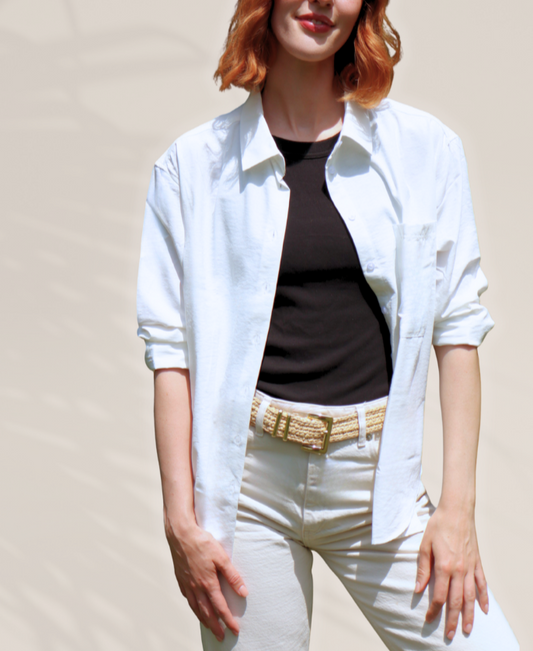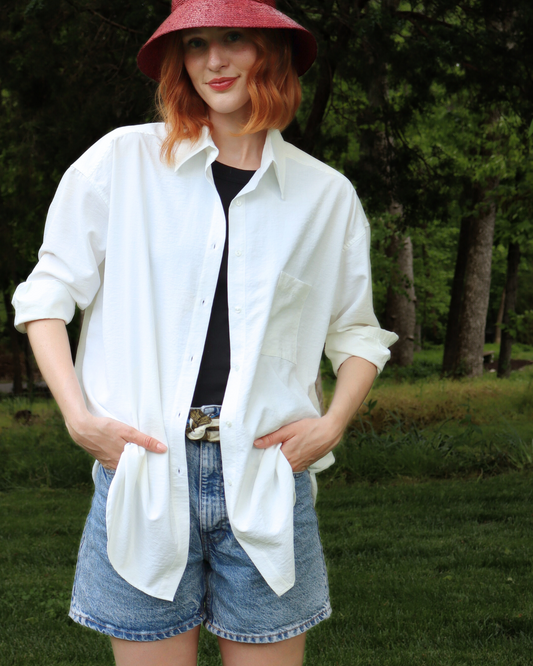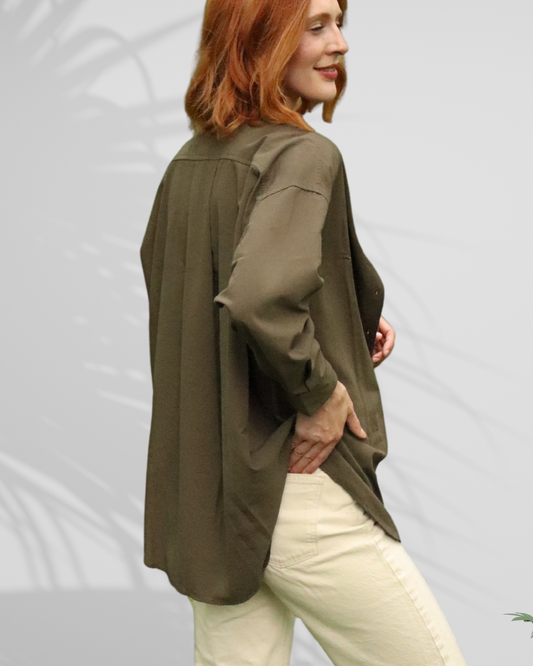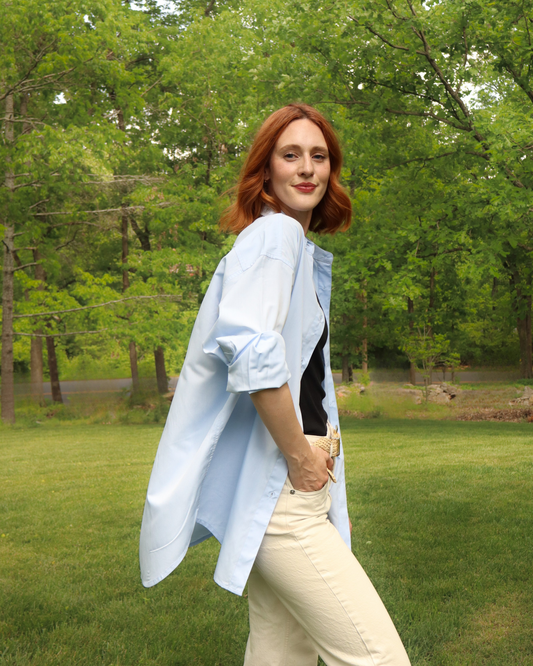Why Linen Shirts Don’t Provide Adequate Sun Protection
Linen shirt fibers are loosely woven, allowing UV rays to pass through easily. Even though linen feels light and cool, it often has a low UPF (Ultraviolet Protection Factor)—sometimes as low as 5—meaning a significant amount of UV radiation can still reach your skin.
Why Linen Falls Short for Sun Safety
Linen is a natural fiber made from the flax plant, prized for its breathability, lightweight feel, and timeless style. While it’s perfect for staying cool in hot weather, its structure is the very reason it offers poor UV protection:
- Loose Weave – Linen fibers are relatively thick but are woven with large gaps between threads to create breathability. These gaps are large enough for UV rays to pass through, much like sunlight through a window screen.
- Light Colors Let in More UV – Many linen shirts are light-colored or white, which reflect visible light but often allow UV rays to penetrate more than darker fabrics.
- Low UPF Rating – UPF measures how much UV radiation a fabric blocks. A standard white linen shirt often has a UPF of around 5, meaning it lets in 1/5 (20%) of UV rays. Dermatologists recommend UPF 30 or higher for meaningful protection.
- Wetting Makes It Worse – Linen loses even more of its protective ability when wet, because water changes the fabric’s refractive qualities, allowing more UV light to pass through.
How to Protect Your Skin in Linen
If you love linen’s airy feel and aesthetic, you can still wear it—just be aware of its limits. Pair it with:
- A high-UPF layer underneath (like a certified sun-protective shirt or tank)
- Broad-spectrum sunscreen on exposed skin
- A wide-brim hat and sunglasses for additional coverage
We fixed the problem
At Some Sun, we wanted a UPF with a slight crinkle, like linen, because we love linen! We design UPF pieces that have that crinkly linen look, soft cotton touch and breathability you want with linen... except that our shirts have the UPF 50+ protection you need. Our fabrics are tightly woven from premium, recycled fibers, and lab-certified to block 98% of UV rays—without sacrificing style. You’ll get that breezy, elevated summer look, but with sun safety built in.
Bottom Line:
Linen may feel cool, but it’s not protecting you from the sun’s invisible damage. For all-day outdoor wear, choose fabrics specifically designed for UV protection so you can enjoy the sun—without paying for it later.
Shop our cute sun protection.

Sources:
- Skin Cancer Foundation – Sun Protective Clothing
- Cancer Council Australia – Understanding UPF Ratings
- NIH – Ultraviolet Radiation and Clothing
If you want, I can also create a shorter Instagram carousel version of this so you can visually show why linen fails at UV protection—those tend to get great engagement for educational content.




